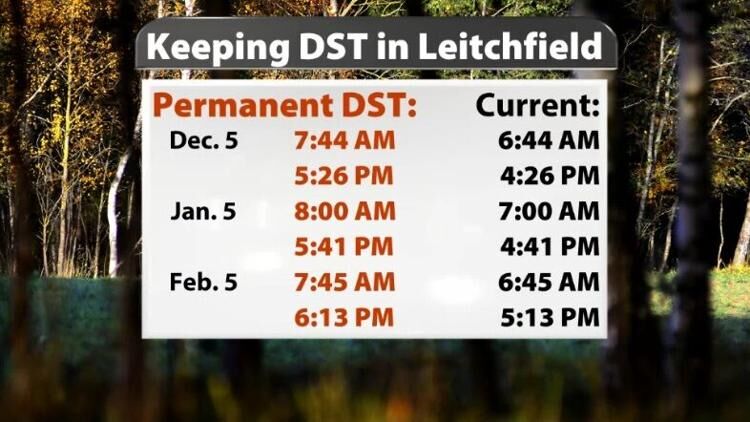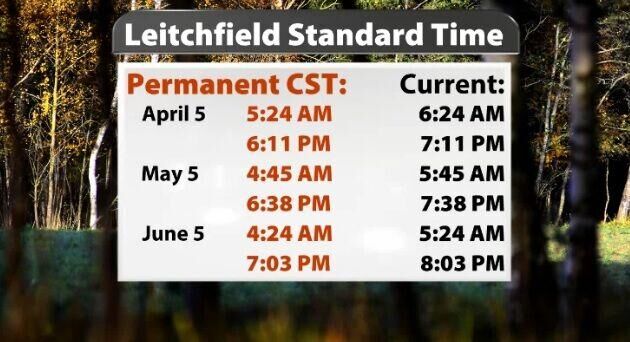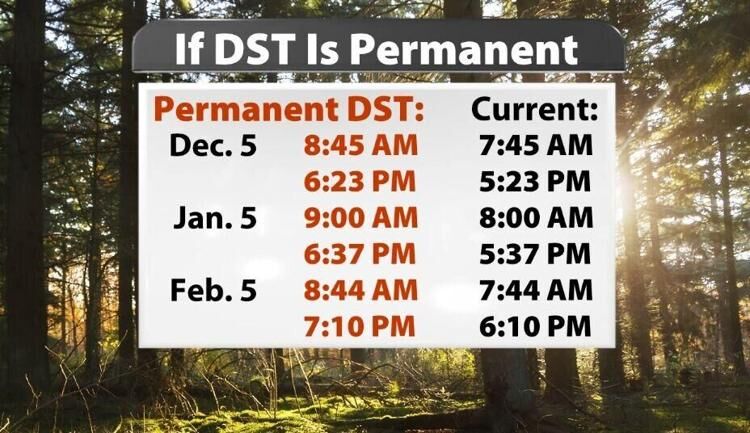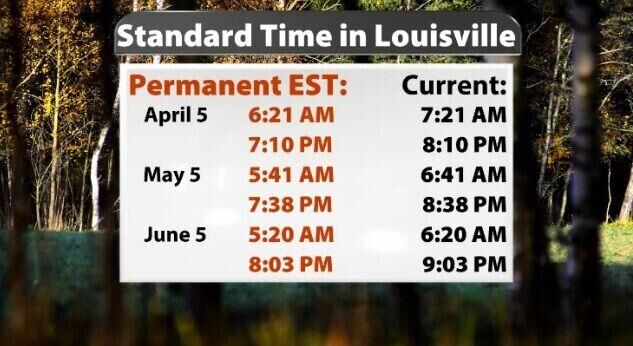Daylight Saving Time starting and ending always sparks debate about changing clocks and the necessity of a time change. This time of year we "fall back" and "gain an hour." You can't actually lose or gain an hour, though, it's just a matter of how we measure time and daylight during the changing seasons. That may sound fine as we continue to adjust to our new times next week, but would would that actually look like in November? February?

In Louisville on March 12, the first day this year of Daylight Saving Time, the sun rose at 7:59 AM and set at 7:47 PM. On November 4 the sun will rise in Louisville at 8:12 AM and set at 6:41 PM, and Daylight Saving Time will end on November 5.

If Daylight Saving Time becomes permanent, it would mean a sunrise at 8:45 AM instead of 7:45 AM on December 5 and a sunset at 6:23 PM instead of 5:23 PM. On January 5 the sun would rise in Louisville at 9 AM instead of 8 AM, and the sun would set at 6:37 PM instead of 5:37 PM. On February 5 the sun would rise at 8:44 AM instead of 7:44 AM and set at 7:10 PM instead of 6:10 PM. Through the middle of winter it would mean the sky staying dark until 9 AM when most people are already at school or work, and the sky staying light past 6 PM. Sunrise and sunset times through the spring and summer months would not change since those are the months when we observe Daylight Saving Time which would be made permanent. Louisville is on the edge of the Eastern time zone, and we have many communities in Central time. Let's do that same math for Leitchfield, Kentucky, to see how permanent DST would play out.

Those times don't look too bad, but what if we did away with Daylight Saving Time altogether and kept standard time year-round? Here's what that would look like for Louisville and Leitchfield.
















